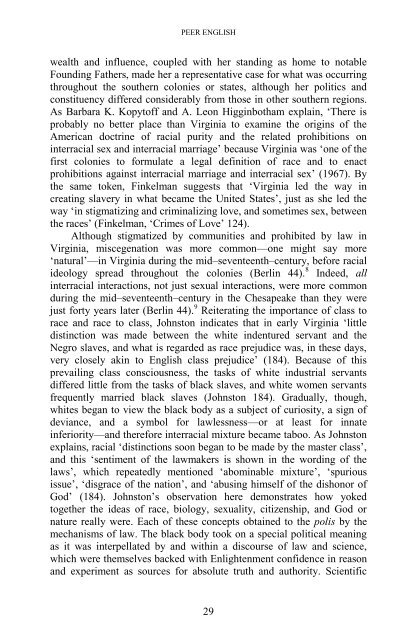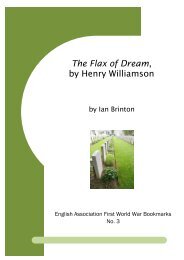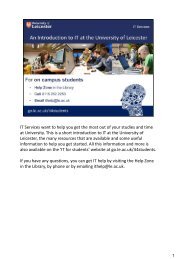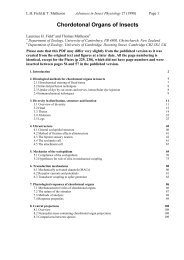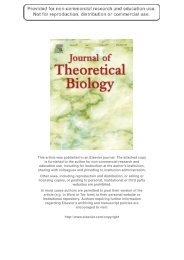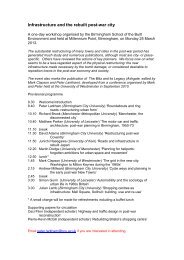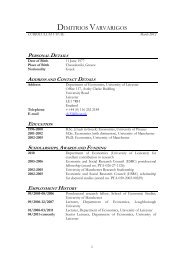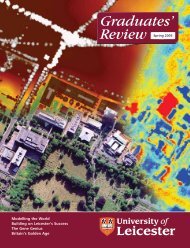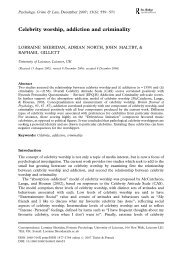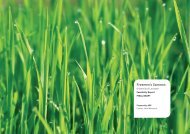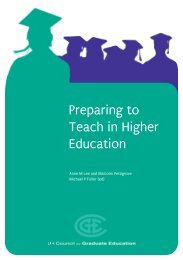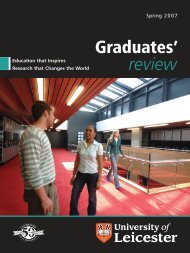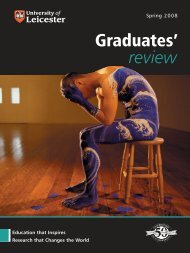From Natural Law to Natural Inferiority
From Natural Law to Natural Inferiority
From Natural Law to Natural Inferiority
Create successful ePaper yourself
Turn your PDF publications into a flip-book with our unique Google optimized e-Paper software.
PEER ENGLISHwealth and influence, coupled with her standing as home <strong>to</strong> notableFounding Fathers, made her a representative case for what was occurringthroughout the southern colonies or states, although her politics andconstituency differed considerably from those in other southern regions.As Barbara K. Kopy<strong>to</strong>ff and A. Leon Higginbotham explain, ‘There isprobably no better place than Virginia <strong>to</strong> examine the origins of theAmerican doctrine of racial purity and the related prohibitions oninterracial sex and interracial marriage’ because Virginia was ‘one of thefirst colonies <strong>to</strong> formulate a legal definition of race and <strong>to</strong> enactprohibitions against interracial marriage and interracial sex’ (1967). Bythe same <strong>to</strong>ken, Finkelman suggests that ‘Virginia led the way increating slavery in what became the United States’, just as she led theway ‘in stigmatizing and criminalizing love, and sometimes sex, betweenthe races’ (Finkelman, ‘Crimes of Love’ 124).Although stigmatized by communities and prohibited by law inVirginia, miscegenation was more common—one might say more‘natural’—in Virginia during the mid–seventeenth–century, before racialideology spread throughout the colonies (Berlin 44). 8 Indeed, allinterracial interactions, not just sexual interactions, were more commonduring the mid–seventeenth–century in the Chesapeake than they werejust forty years later (Berlin 44). 9 Reiterating the importance of class <strong>to</strong>race and race <strong>to</strong> class, Johns<strong>to</strong>n indicates that in early Virginia ‘littledistinction was made between the white indentured servant and theNegro slaves, and what is regarded as race prejudice was, in these days,very closely akin <strong>to</strong> English class prejudice’ (184). Because of thisprevailing class consciousness, the tasks of white industrial servantsdiffered little from the tasks of black slaves, and white women servantsfrequently married black slaves (Johns<strong>to</strong>n 184). Gradually, though,whites began <strong>to</strong> view the black body as a subject of curiosity, a sign ofdeviance, and a symbol for lawlessness—or at least for innateinferiority—and therefore interracial mixture became taboo. As Johns<strong>to</strong>nexplains, racial ‘distinctions soon began <strong>to</strong> be made by the master class’,and this ‘sentiment of the lawmakers is shown in the wording of thelaws’, which repeatedly mentioned ‘abominable mixture’, ‘spuriousissue’, ‘disgrace of the nation’, and ‘abusing himself of the dishonor ofGod’ (184). Johns<strong>to</strong>n’s observation here demonstrates how yoked<strong>to</strong>gether the ideas of race, biology, sexuality, citizenship, and God ornature really were. Each of these concepts obtained <strong>to</strong> the polis by themechanisms of law. The black body <strong>to</strong>ok on a special political meaningas it was interpellated by and within a discourse of law and science,which were themselves backed with Enlightenment confidence in reasonand experiment as sources for absolute truth and authority. Scientific29


